The Complete Cannabis Dispensary Marketing Guide And Checklist

Owners and stakeholders often overlook marketing when they launch a new cannabis dispensary.
We get it. Startup cannabis dispensaries have many moving parts.
And complicated regulatory and compliance requirements that vary from state to state, along with competition from the deluge of businesses entering the green rush in newly legalized markets can make launching a new brand even more challenging.
That’s why we constantly emphasize the importance of intentional branding and marketing.
When market saturation, product commoditization, and cannabis normalization collide, marketing is often the only differentiator between superficially similar businesses.
We’ve put together The Cannabis Dispensary Marketing Guide and Checklist to help you see what you can do to stand out from the competition. It covers everything you need to know, from the critical foundational actions to tactics you should implement after your business launches.
Additionally, the Cannabis Dispensary Marketing Pyramid will help you visualize the appropriate progression of actions and tactics as you prepare to open your new dispensary’s doors.
We encourage you to integrate the marketing pyramid into your business plan, so keep the document nearby so you can reference it frequently. There’s a short version of the checklist in the final pages of this guide as well.
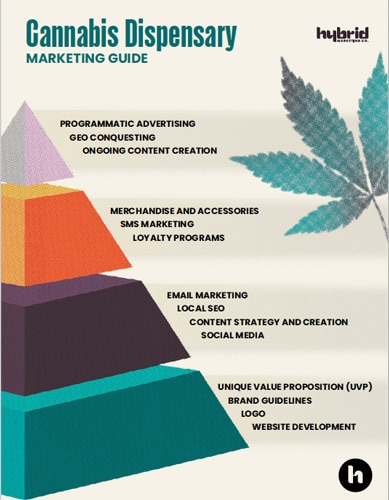
Table of Contents
UNIQUE VALUE PROPOSITION (UVP)
It’s important to define your dispensary’s unique value before selecting your business name and building its identity. Determining the unique value that differentiates your dispensary from the competition can guide your naming and logo development process.
What is unique value proposition development?
Unique value proposition (UVP) development is a strategic process whereby a dispensary identifies, cultivates, and articulates the distinctive offerings that make it stand out from the competition.
This process involves highlighting the singular benefits, features, or services the dispensary provides, clearly understanding customer needs, and offering solutions that competitors can’t match.
The outcome is a compelling and concise statement that captures the unique value of a business and serves as the foundation of its branding and marketing efforts, which enhances consumer understanding and appeal. UVP development is vital for fostering customer engagement and brand loyalty and driving sales growth.
Your UVP tells customers:
-
WHAT YOUR BUSINESS DOES
1
-
WHY PEOPLE SHOULD BECOME LOYAL CUSOTMERS
2
-
WHAT DIFFERENTIATES YOUR DISPENSARY FROM THE COMPETITION
3
Your unique value proposition is the driving theme behind your dispensary brand. You’ll use it repeatedly. However, developing an impactful UVP takes time and often includes many revisions. If you’re struggling to define why a customer should shop with you versus a competitor, it’s a sign that you should reconsider your business plan.
Here’s some examples of great cannabis-industry UVPs:
GREEN DRAGON (DENVER, COLORADO)
Premium bud, not premium prices.
LUCKY LION (PORTLAND)
Lifted luxury.
HAPPY HEMP (NORMAN, OKLAHOMA)
Oklahoma’s friendliest cannabis dispensary.
NECTAR (PORTLAND)
Oregon Owned, Oregon Grown.
MAIN STREET MARIJUANA (WASHINGTON)
The world’s largest selection of cannabis.
GREAT NORTHERN CANNABIS (ALASKA)
The classiest joint in Alaska.
DISPENSARY BRAND NAME
The naming process may seem straightforward. You may even have a brand name in mind, but we recommend flexibility. When you prematurely commit to a name, you may discover it doesn’t align with your UVP.
Start with a small-group brainstorm. Have each participant note the words they feel best describes your business. Then link those words together to form a name or consider combining two words into one.
Here are more tips to help you through the naming process:
- Say the name out loud. Sometimes something works on paper, but it doesn’t flow very well when you actually say it.
- Consider a name that has a meaning to it, or can convey some type of benefit to potential customers.
- Don’t be generic! Pick a name that is unique. You want it to be memorable, not forgettable. It should stand out when listed amongst the names of your competitors.
- Choose a name that appeals not just to you, but the ideal customers you would like to attract to your dispensary.
- Think on it. When you’ve narrowed your name to 4-5 contenders, let them marinate for a while.
- Google your top contenders. You want to make sure nobody else is using the name, the domain name is available, and the social media profiles are available.
- Make sure to register your key domain (dispensary name.com) but any other domain names that might be close. For example thedispensaryname.com, or any of the .net, .shop, or more obscure extensions.
- For social media, we typically only recommend Facebook and Instagram for dispensaries. That doesn’t mean you shouldn’t register profiles elsewhere. Twitter, Pinterest, and whatever other social media platforms are currently a la mode, just register all of them. You don’t have to use them, but you need to at least reserve the option, and prevent anyone else from using them.
DISPENSARY BRAND LOGO
Your logo is arguably the most significant brand element. Avoid leaving logo development to junior designers or a service like Fiverr.
The logo development process should be thoughtful, introspective, and executed by professionals with demonstrated success. Consider a logo that appeals to the aesthetic of your ideal customers.
Here are two essential questions to ask:
- What will speak to my customer’s deepest values or lifestyle visually?
- What will my logo say about my brand to those who see it?
Your logo doesn’t necessarily have to feel perfect to you – after all, it’s not about what you want but what your customers want. Don’t be afraid to contact folks in your community to monitor their reaction during the logo development process.
Rebrands are expensive and time-consuming, and you avoid that frustration by opening your dispensary’s doors with a beautiful and intentionally designed logo that will resonate with customers beyond the first five years of operations.



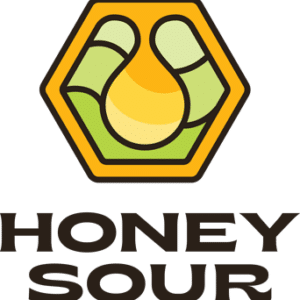


BRAND GUIDELINES
Foundational brand elements don’t end with a UVP, name, and logo. They also include a set of intentionally crafted guidelines that employees and partners can use to ensure brand consistency in internal and external communications.
Brand guidelines include variations of your logo, typography styles, and icons. When we develop brand guidelines for clients, we often also include information regarding key customer personas and demographics. This information helps to develop one of the most overlooked elements of a brand’s identity: tone of voice and personality.
Brand voice is what your dispensary says. Brand tone and personality are how you say it.
A well-crafted tone of voice and personality humanizes a dispensary and fosters deeper consumer connections by reflecting its core values consistently across all platforms. This critical tool sways consumer perception and behavior, driving brand recognition and influencing purchasing decisions.
Definition and purpose:
Brand tone of voice shapes a unique, consistent communication style that reflects a brand’s core values.
Consistency across platforms:
A defined brand voice ensures uniformity across all platforms, bolstering brand recognition.
Building relationships:
A brand voice that resonates with consumers encourages loyalty and trust.
Influence on buying decisions:
A compelling brand voice can sway consumer behavior, driving perceptions and boosting conversions.
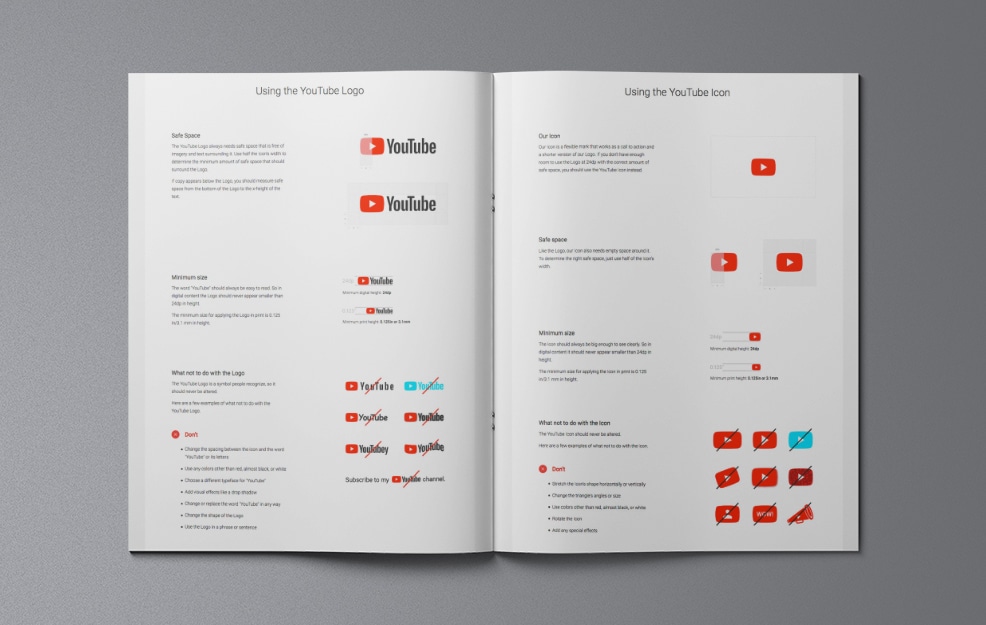
WEBSITE
Your website is your dispensary’s digital welcome mat. It’s the online hub of your business. If executed and maintained effectively, it can become a primary revenue driver.
A poorly designed website doesn’t just make a bad impression, it won’t satisfy search engine algorithms (SEO). This can quickly become a business liability.
Your dispensary’s website must:
- Prominently display your UVP or tagline above the fold (before visitors scroll) on the homepage.
- Adhere to your brand guidelines.
- Convey the value of your business to customers clearly and concisely.
- Include expertly written copywriting aligned with your brand tone of voice and personality.
- Offer visitors an exceptional user experience that requires little or no thinking to purchase through obvious “conversion points.”
Websites take time to “mature” from a search engine optimization (SEO) standpoint, so you should aim to publish a live site no less than three months before doors open.
Additionally, you should view your website as a living, breathing document that you must constantly maintain, expand upon, and improve rather than a static asset
EMAIL MARKETING
Despite what you may have heard, email marketing isn’t dead. It’s thriving. This tried-and-true tactic is used in virtually every industry, but you must execute your email marketing strategy intentionally and effectively.
When it comes to email marketing, you’re either training customers to find value in your content or training them to ignore you.
Email marketing is particularly essential for cannabis brands. Your contact list is one of the few pieces of digital real estate you genuinely own. For example, if you depend solely on social media to drive site traffic and business, you’ll find yourself in a challenging position if your account becomes restricted or deactivated.
You’ll need a robust email marketing and analytics platform upon website launch. And you need to develop content and website journeys (forms, calls-to-action, pop-ups) that encourage email opt-ins.
Alpine IQ is the email marketing platform of choice for most dispensary brands. Alpine IQ integrates with Point of Sale systems (POS) like Dutchie, Treez, BioTrack, and more, allowing exceptional reporting to track revenue back to specific email campaigns. Still, there are other cannabis-specific or cannabis-friendly email marketing platforms you might consider.
Here’s a short list of alternatives:
- Klaviyo
- Active Campaign
- MailerLite
- Dotdigital
- Omnisend
- Moosend
LOCAL SEO
Local search engine optimization (SEO) optimizes your dispensary website to rank above competitors on the Search Engine Results Page (SERP) of platforms like Google.
You want your cannabis dispensary to be the top result for customer queries like “dispensary near me.”
You also want your business to appear in the top spot on Google’s Map Pack, which appears on the right side of the SERP and displays relevant information like business hours, location, contact information, reviews, and website.
Cannabis dispensaries are location-based businesses, so optimizing your website for local SEO is essential. The last thing you want is to learn that a customer standing 100 feet from your dispensary searched “dispensary near me” and you didn’t appear on the results page.
Here are a few straight forward local SEO tips to get you started:
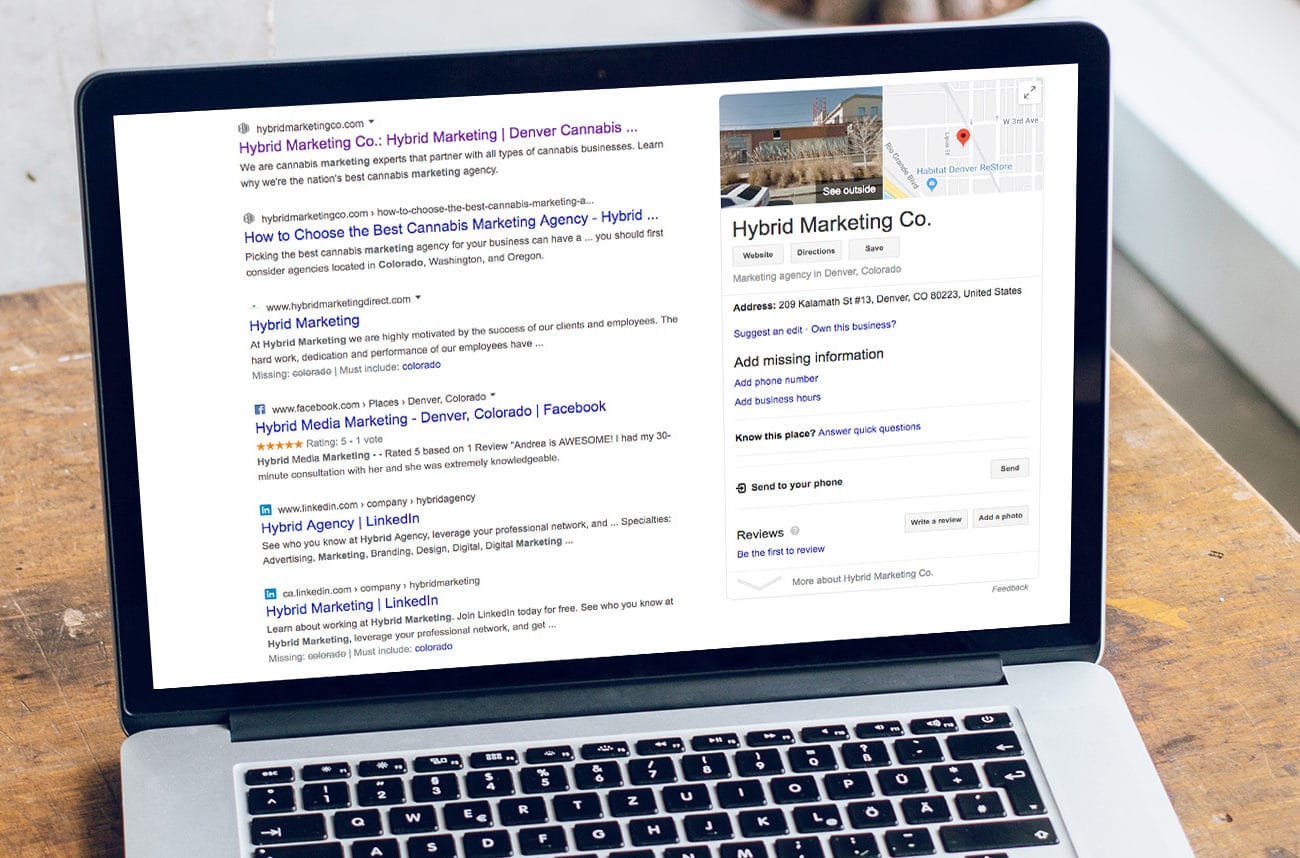
Optimize your Google Business Profile:
Ensure your Google Business listing is accurate, complete, and regularly updated.
Use local keywords:
Incorporate location-based keywords in your website’s content, metadata, and alt tags.
Encourage online reviews:
Request and respond to customer reviews, as they contribute to local SEO performance.
Leverage local directories:
List your business in reputable local directories to improve local visibility and citation consistency.
Create local content:
Generate locally relevant content that serves your community’s needs, positioning you as a local authority.
Cannabis directories:
List your dispensary on popular cannabis directories like Leafly and Weedmaps to enhance your local presence and ensure consistent citation accuracy.
Here’s a selection of platforms we recommend for Local SEO:
- SEMRush
- Google Search Console
- Screaming Frog
- LocalFalcon
- dbaPlatform
- Yext
SOCIAL MEDIA
Social media is a challenging topic in the cannabis industry. After all, most social media providers don’t want the industry operating on its platforms, Meta, in particular.
Still, social media can be helpful for driving awareness and sales for dispensary brands organically. And some platform providers, specifically Twitter and Tumblr, now offer paid social media advertising opportunities to the cannabis industry.
With a careful, considered, and strategic approach to social media publishing, you can keep your profiles safe and see a modicum of success. But there are critical factors to keep in mind.
What you need to know about cannabis social media publishing:
- Use hashtags and images carefully: Cannabis-specific hashtags and imagery featuring products and consumption can result in account restrictions or deactivation (on Meta properties, in particular).
- Don’t attempt to sell anything: Instead, focus on entertaining and engaging your community.
- Be prepared to throw out your brand guidelines: Social media is a world unto itself, and a brand-first approach no longer works, so be ready to step far outside your comfort zone to win engagement.
- Invest in a quality social media publishing and analytics tool: Social media requires constant attention. Do yourself a favor and invest in a tool to schedule and automate posts and review performance.
Social media publishing and reporting tools we recommend:
- Sprout Social
- Hootsuite
- Later
- HubSpot
ONGOING CONTENT
Cannabis dispensaries face a gauntlet of restrictions and potential compliance roadblocks in the battle to market themselves effectively.
Most paid advertising channels (like Google and most social media platforms) don’t offer straightforward advertising opportunities to the industry, making it difficult to use a standard digital marketing approach.
Still, you can circumvent some of these roadblocks through content. Content is 90% of the effort involved in successful local SEO strategies. With the right strategy in place, content can build awareness and lead to new customer conversions.
The lifeblood of a successful content marketing strategy is a steady stream of valuable, engaging, and high-quality content.
You should include a mixture of content styles intentionally and strategically crafted to produce a desired positive outcome. And don’t confine your vision of content to the written word.
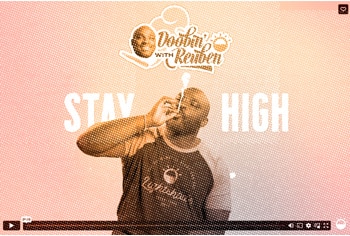
Here’s a list of content styles you can include in your dispensary content marketing strategy:
- Location pages designed specifically for local SEO
- Relevant blogs that speak directly to your audience’s challenges, lifestyles, and goals
- Gated long-form content pieces and lead magnets like checklists, guides, eBooks, and white papers
- Video content for your website and social media channels
- Podcasts, playlists, emails, and more
SMS (Short Message Service) MARKETING
Like email, SMS marketing (text message-based marketing) is an essential element of a successful dispensary’s marketing mix.

This approach is commonly used across retail-based industries, and while some customers find text messages intrusive, most prefer to receive SMS communication.
Here are a few reasons to use SMS marketing:
- SMS has the highest open rate in the world of marketing (98%).
- According to Yotpo, 41% of consumers prefer receiving brand updates via SMS.
- 70% of consumers opted to receive texts from businesses in 2022, and 1 in 3 consumers checked their notifications within one minute of receiving a text (SimpleTextin)
- Experts predict that 72% of all Internet users will use only smartphones to access the Internet by 2025.
- Almost 50% of US consumers prefer mobile coupons.
Still, there’s an art and science behind effective SMS marketing.
Too many texts are intrusive.
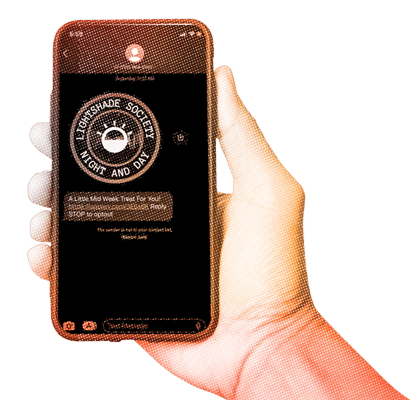
Here’s a general overview of what we recommend:
- Limit text message blasts to significant promos or sales
- Deploy no more than one weekly text blast
- Keep your texts short, clever, and to the point.
- Ensure you review compliance regulations and SMS platform providers’ recommendations to avoid issues (cell service providers aren’t cannabis-friendly).
Here’s a short list of cannabis-friendly SMS platforms:
MERCHANDISE AND ACCESSORIES
Branded merchandise is a no-brainer for any cannabis-related business, but it’s particularly useful for dispensaries.
After all, what’s better than turning loyal customers into walking billboards? Additionally, merch gives you an eternal source for giveaways and offers cannabis tourists the perfect souvenir (with the added benefit of building awareness outside your market).
Branded cannabis consumption accessories are also excellent awareness-building tools.
Consumers opting for inhalable forms of cannabis such as flower, dabs, and vapes, undoubtedly need accessories for consumption.
These accessories might as well bear your logo.
Here’s a simple list of branded merchandise and accessories you should consider:

- T-shirts
- Hoodies
- Hat
- Stickers
- Lighters
- Dab rigs
- Vape batteries/pens
- Pipes and bongs
- Rolling papers and blunt wraps
- Ashtrays and stash boxes
- Cannabis grinders and mills








DISPENSARY LOYALTY PROGRAMS

Much like any other retail business, cannabis dispensaries are in perpetual pursuit of customer retention and brand loyalty. While initial engagements can draw in customers, the subsequent interactions and incentives keep them coming back.
Dispensary loyalty programs offer a structured and effective means of fostering repeat business. By rewarding customers for their continued patronage, dispensaries can improve customer satisfaction and stimulate sales.
A thoughtfully designed loyalty program can be an indispensable tool in your cannabis marketing arsenal. You should craft these programs to provide real value to your customers, ultimately leading to brand evangelism.
Below is an outline of key elements to include in your dispensary loyalty program:
- Points System: Implement a points system where customers earn points for each purchase. Customers can redeem points for discounts, products, or exclusive experiences.
- Tiered Rewards: Introduce tiered rewards to incentivize more lavish spending. Customers can ascend to higher tiers by accumulating points, with each tier offering progressively better rewards.
- Referral Bonuses: Encourage customers to refer friends and family. Provide the referring customer and the new referral with bonuses like discounts or extra points.
- Personalized Offers: Utilize purchase data to create personalized offers. Tailoring rewards to individual preferences makes the customer feel valued and understood.
- Exclusive Events: Your dispensary can host events like product launches or vendor pop-ups exclusively for loyalty program members to instill a sense of exclusivity and belonging among customers.
- Digital Integration: Optimize your loyalty program for smartphones and integrate it with your online store. This allows for a seamless experience and broadens the reach of your program.
- Feedback Loop: Engage customers in providing feedback and suggestions for the loyalty program. This creates a sense of ownership and helps refine the program over time.
- Compliance Awareness: Ensure your loyalty program adheres to state and local regulations concerning cannabis promotions and rewards.
- Data Analysis: Leverage data gathered through the loyalty program to gain insights into customer behavior and preferences. This informs future marketing efforts and inventory decisions.
Dispensary loyalty programs should be adaptive, data-driven, and customer-centric. By providing genuine value and continuously evolving based on customer feedback, these programs can foster long-term relationships and positively impact your bottom line.
PROGRAMMATIC ADVERTISING
Do you want your digital advertising displayed on cnn.com, people.com, dailymotion.com, or other highly-trafficked Internet sites?
Programmatic advertising is one of the few digital advertising channels available to the cannabis industry. Like paid social media advertising, programmatic ads put your brand in front of targeted audiences online.
Still, there’s an art to customer conversion through programmatic advertising, and that’s where the UVP development process and a deep understanding of your customer’s lifestyles, desires, and challenges come into play.
You need to understand your audience to advertise to them effectively. You also often need to dangle a compelling offer in front of them to inspire clicks and conversions.
Here are some offer ideas:
- Discounts and coupons: This is a traditional but highly effective programmatic “lead magnet” or offer. For example, offering a 10% discount in exchange for a customer’s information can be very enticing.
- Virtual events and webinars: Virtual events like a cannabis pairing seminar or a webinar covering cannabis’ potential wellness benefits can be a powerful lead magnet encouraging new customers to engage with your brand.
- Educational eBooks: Many customers want to learn more. An eBook that covers cannabis strains, their effects, and the history and culture of cannabis consumption can be enticing to the appropriate audience.
- Online courses: An online course that educates customers on the various aspects of cannabis consumption or cultivation could be attractive.
- Guides: A well-composed guide on topics like “How to Select the Right Cannabis Strain for You” or “A Beginner’s Guide to CBD” could appeal to customers new to the plant or those returning post-legalization.
Remember, it’s essential to ensure your marketing efforts—including programmatic lead magnets—comply with local laws and regulations regarding cannabis advertising.
CONCLUSION
There’s no one-size-fits-all approach to cannabis dispensary marketing. Just as every customer is unique, with varying lifestyles, needs, and desires, every dispensary is unique.
Your dispensary requires a specialized marketing approach with bespoke strategies and tactics.
Our guide isn’t intended as the be-all and end-all of cannabis marketing, but this helpful guide can ensure your house is in order as you progress through your business development.
If you’re ready to learn more about the strategies, tools, and tactics discussed in this guide, get in touch so we can talk.
Get The Cannabis Dispensary Marketing Guide & Checklist








